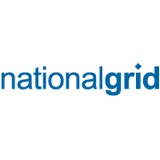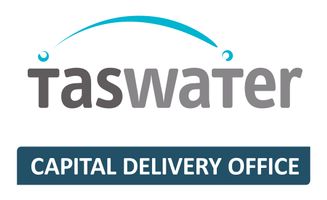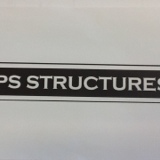Title Page
-
Document No. 025-F051-1229 Rev0 Oct 2012
-
Weekly Site Environmental Inspection Checklist
-
Project / Facility:
-
Inspection Date:
-
Inspection By:
-
Area of Inspection:
-
Others involved in inspection:
1. Air Quality
-
Will Air Quality be inspected in this audit?
-
Are bare earth surfaces minimized?
-
Are work areas, access roads and stockpiles watered before and during work on dry, windy days?
-
Are construction activities that promote dust generation limited on windy days?
-
Are trucks covered when transporting earth/soil on dry, windy days?
-
Are stockpiles stabilized / covered and surrounded by a silt fence?
-
Are low speed limit signs set up for the construction site?
-
Are plant, equipment and vehicles maintained and free of leaks?
-
Does any plant, equipment or vehicles have lots of dirty exhaust smoke after running for 10 seconds?
-
Do excavated areas have bad odours? If yes, minimize exposed areas and cover as quickly as possible.
2. Vibation
-
Will Vibration be assessed in this audit?
-
If vibration monitoring is required by the contract, are results being recorded?
-
Are vibration results within the allowed contract or regulation limits?
-
Do trucks remain on designated routes to minimize vibration?
3. Noise
-
Will Noise be assessed in this audit?
-
Are site work hours in accordance with required times (e.g. not working too late and annoying neighbors and public)?
-
Is regular noise monitoring undertaken on all plant and equipment?
-
Are plant and equipment noise levels within allowed limits?
-
Do trucks remain on designated routes to minimise noise?
-
Is fixed plant placed in areas on site to minimise noise to local residents and the general public?
-
Are Noise barriers in place and effective?
4. Erosion and Sediment Control
-
Will Erosion and Sediment Control be inspected in this audit?
-
Are cut-off drains in place and working correctly?
-
Are silt fences in place and working correctly?
-
Do silt fences need maintenance (e.g. repair holes, empty out when 50% full)?
-
Are silt curtains in place and working correctly??
-
Are sediment basins in place and working correctly?
-
Are sediment basins large enough to prevent over-topping?
-
Do silt basins need maintenance (e.g. cleaning out, fixing outlet etc)?
-
Is dewatering supervised and are discharge protection controls in place?
-
Are plant, equipment and vehicles stopped from crossing waterways as much as possible?
-
Are dewatering discharges controlled (e.g. dispersion, filter socks, erosion protection)?
-
Have all erosion and sediment controls been working correctly after the last large rain event?
-
Are controls relocated and new one put in place as the site changes?
-
Are stockpiles positioned away from streams, drains and the ocean?
-
Do stockpiles on flat ground have a silt fence right around them?
-
Do stockpiles on slopes have a silt fence on the downhill side?
-
If stockpiles are in place for more than 1 month, have they been stabilised (e.g. grass sown / mulched)?
-
Are controls installed at batters (e.g. geotech fabric)?
-
Are banks stabilized (e.g. geotech fabric on stream banks)?
-
Is access to banks limited (e.g. stream banks)?
-
Are stabilized construction entrance-ways working correctly?
-
When working in waterways, is water quality being monitored?
-
Are traffic areas stabilised to limit mud leaving site?
-
Is litter protection installed at entrances into stormwater drains (e.g. litter traps)?
-
Is sediment protection installed at entrances into storm-water drains (e.g. silt fence, gravel sausages, straw bales)?
-
Is water quality being monitored when doing excavation work in and around water?
-
Are minimum flows maintained for water quality when structures are erected in waterways?
5. Contamination
-
Will Contamination be assessed in this audit?
-
Is there adequate containment / treatment available for contaminated water?
-
Did work stop when contaminated land was encountered?
-
Have contaminant types and concentrations been identified?
-
Are wash facilities available to limit contaminated soil leaving the site via construction equipment and vehicles?
-
Is water table monitoring undertaken during de-watering activities?
6. Hazardous Substances
-
Will Hazardous Substances be assessed in this audit?
-
Are HAZCHEM signs displayed on hazardous substance storage containers?
-
Are hazardous substances stored neatly in a secure container?
-
Are chemicals (e.g. curing oil) used away from watercourses and drains?
-
Are the segregation requirements of hazardous substances complied with?
-
Are all containers, carrying hazardous substances clearly and correctly labelled?
-
Are storage areas for hazardous substances placed away from streams, drains and the ocean?
-
Are fuel / hazardous substance container(s) bunded to prevent a discharge in case of a spill?
-
Is the transfer and disposal of hazardous substances and empty containers undertaken in controlled conditions?
-
Are all plant, equipment and trucks free from oil and fuel leaks?
-
Are bunds put around fixed plant to prevent discharge of fuel or oil into any nearby water?
-
Are drip trays placed under fixed plant to prevent leakage of fuel or oil (e.g. a compressor on a jetty)?
-
Is work using large quantities of hazardous substances stopped / not started when rain is likely to occur?
-
Is Housekeeping maintained to limit spills of chemicals and fuels?
-
Is there a 240L spill kit on site? Does it need restocking?
-
Does it need restocking?
-
Is the 240L spill kit large enough to deal with the worst possible fuel / chemical spill on site?
-
Are there small spill kits (pads etc) in plant, equipment and trucks on site?
-
Do trucks / vehicles carrying hazardous substances have appropriate licenses and signs?
-
Do trucks / vehicles carrying hazardous substances carry the correct emergency response documents / spill kits?
-
Are refueling areas set up away from streams, drains and the ocean?
-
Are refueling areas bunded in case of a spill?
7. Resource Use
-
Will Resource Use be assessed in this audit?
-
Are all plant and machinery regularly serviced to ensure fuel efficiency?
-
Is the electrical equipment in site offices and lunch rooms switched off when not in use?
-
Are long term stockpiles stabilised to prevent dust if practical rather than watering?
-
Have alternate sources of water been considered (bore water, recycled water) if available?
8. Visual Amenity
-
Will Visual Amenity be assessed in this audit?
-
Are the site and storage areas kept tidy (e.g. no rubbish / litter)? If it is messy, get it cleaned up.
-
Are rubbish bins and skip bins emptied before they get too full?
-
Is mud being tracked onto roads?
9. Recycling and Rubbish
-
Will Recycling and Rubbish be assessed in this audit?
-
Are there enough covered rubbish bins and skip bins on site?
-
Are waste oils, grease and hazardous substances collected and stored separately?
-
Are concrete trucks and pumps washed out into a bunded area?
-
Are there portable toilets provided at each site? Are they clean and being emptied regularly?
10. Trees, Animals and Weeds
-
Will Trees, Animals and Weeds be assessed in this audit?
-
Have all significant environmental areas been marked out on site (e.g. with flagging, bunting or fencing)?
-
Are any identified protected animals, birds or fish being well protected?
-
Have any protected trees had fencing put around them? Are the fences in good condition?
-
Have all workers been told about the environmental conditions at the site induction?
-
Have all workers been told not to damage trees and not to park or store materials under trees?
-
Has pruning of tree branches been undertaken instead of complete removal of trees?
-
Are trees felled into the construction site and not into undisturbed vegetation?
-
Have site areas, traffic and haul routes been designated, enclosed and signs installed?
-
Have noxious weeds been identified and treated prior to stripping?
-
Has topsoil infected with noxious weeds (and seeds) been quarantined?
-
Have all workers been instructed to make sure they do not kill any animals, fish or birds?
-
Where possible, have injured animals been taken to an animal hospital, vet or refuge?
-
Is there any bare earth / banks that need re-grassing or re-vegetating?
-
Have pipe ends been blocked or capped to stop animals getting into them?
11. Community and Cultural Issues
-
Will Community and Cultural Issues be assessed in this audit?
-
Have all sites of known cultural significance and areas of non disturbance as identified in the contract been located and identified with flagging or other appropriate method?
-
As required by contract, have representatives from local heritage groups been present when clearing and excavation works are undertaken?
-
Has work ceased until approval has been given to recommence in areas where heritage discoveries have been found?
-
Have areas of heritage discoveries been protected by fencing or flagging?
-
Have the local community and passing motorists been kept informed through community consultation and appropriate roadside signs?
-
Is a complaints response mechanism in place and maintained?
-
Is access maintained to all properties and adequate traffic management in place?
-
Are community walkways adjacent to / through the site controlled and safe to use?
Confirmation of information sourced during inspection
-
Lead Inspector
-
Second Inspector
-
Reviewed by Project Manager














